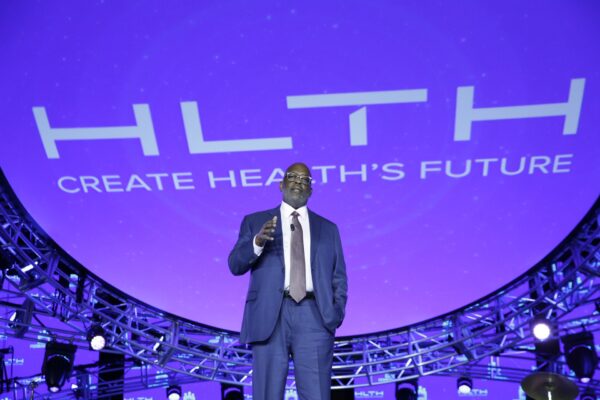
Bernard J. Tyson, CEO of Kaiser Permanente, speaking at the HLTH conference Monday in Las Vegas
California-based healthcare provider Kaiser Permanente has launched a new initiative to ensure many of its members have access to healthy food. Called Food for Life, the program, announced Monday at the HLTH conference in Las Vegas, will work with Calfresh, California’s supplemental nutrition assistance program, to find and enroll eligible Kaiser members.
While CalFresh provides enrollees up to $192 per month to buy food, the program is underused. Kaiser wants to help change that.
“Each day in America, there are approximately 37 to 39 million citizens who are going to bed without a meal,” said Kaiser chairman and CEO Bernard Tyson in a press briefing. “Here at Kaiser Permanente, we believe our portion of that maybe 3 million of our 12 million members.”
Last year, the integrated health system made waves when it announced that it would pledge $200 million to combat homelessness and affordable housing. Since then, elements of that program have become clearer.
Though making sure their members receive adequate housing and a nutritious meal may be a non-traditional approach for a healthcare provider, Tyson noted prevention is part of Kaiser’s business plan. He cited Kaiser programs to find housing for homeless people with at least one chronic condition, prevent suicides, control gun violence and support fire victims. He also pointed to research that affirms their efforts to link Kaiser members with Calfresh could improve health and reduce pressure on their system.
“If you look at how much money we are spending on healthcare, the fundamental healthcare system in this country is still a fix me system,” said Tyson. “It’s wait until you get sick and need care that you plough in the resources.”
Kaiser is not the only health system targeting nutrition. In 2017, Geisinger launched the Springboard Healthy Scranton initiative, a population health management program. One of the elements of the program is a fresh food pharmacy — an initiative that “prescribes” a food program for diabetic, food-insecure patients.
To get the program going, Kaiser has reached out to 200,000 of its Calfresh-eligible members, mostly by text messages, to help them get enrolled in the program. The response has been good, with more than 7,000 people signing up in the program’s early days. In the coming months, Kaiser hopes to reach as many as 600,000 member households.
As Food for Life rolls out, Kaiser will be collecting outcomes data and tweaking the program as needed. The organization is particularly interested in how Food for Life could alter the health trajectories for diabetes, heart disease and other chronic disease patients, improve adherence to specialty diets and reduce the need for medical care.
“We already know from the data that there is a lower cost of care…when people are eating healthy,” said Tyson. “We will continue to monitor the outcomes and learn from any gaps.”
In March 2020, Kaiser plans to expand the program to provide medically tailored meals for patients with chronic diseases, which could reduce hospital admissions. The organization is also considering delivering meals for family members, regardless of health status, which they believe would be less intrusive for families and might also support compliance.
Though Tyson was careful to frame this as sound business – improving health on the population level – he also expressed a great deal of pride in the program.
“How do we want history to record what we did on our collective watch?” asked Tyson. “I’d like for the chapter to say that we tried to solve these problems and create a level playing field for everybody.”
Photo: HLTH












